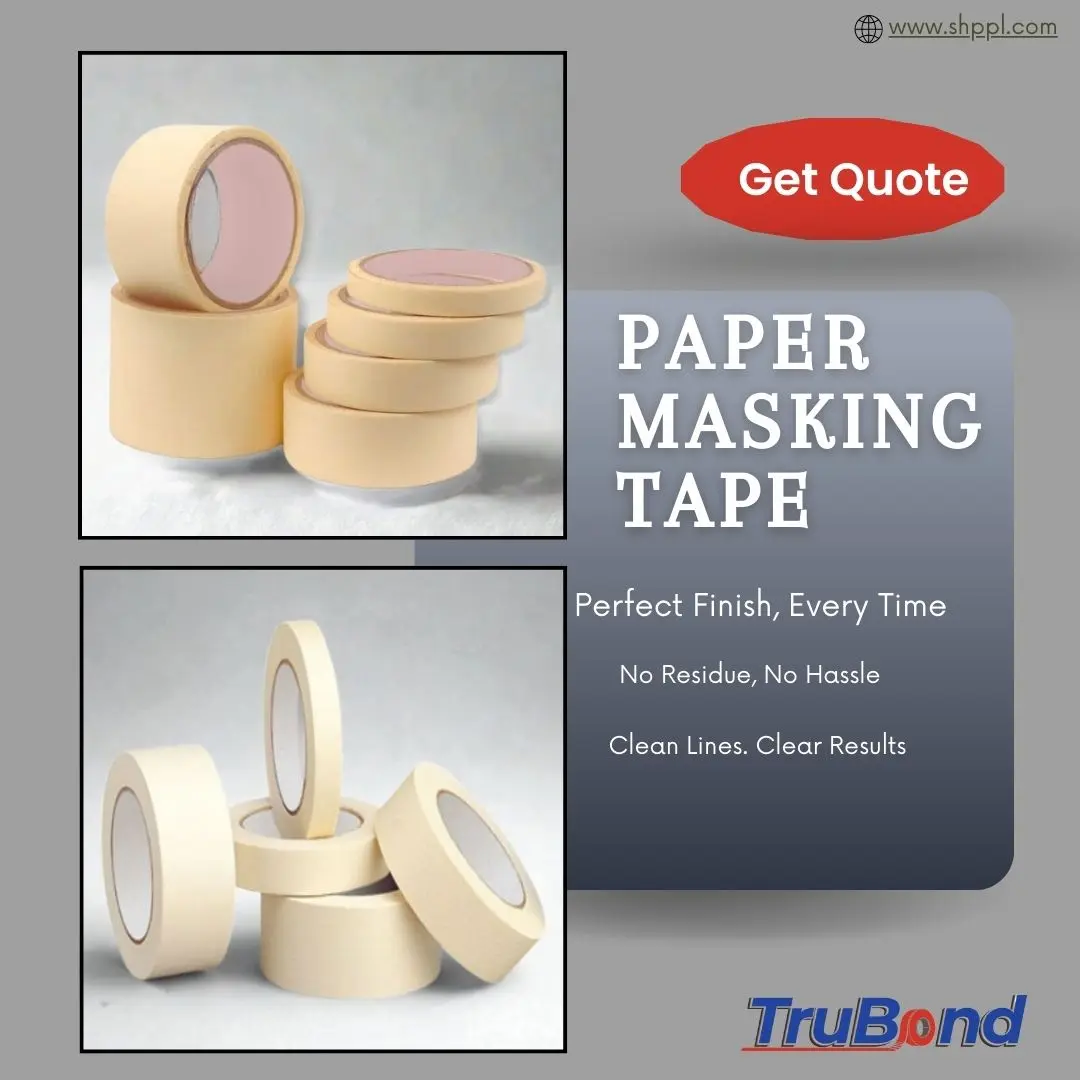
FMCG & E-Commerce: Fast Kitting, Temporary Seals, and Clean Hand-offs
High-velocity dispatch floors need quick, reversible holds.
- Kitting & staging: Bundle SKUs or accessories with standard-grade crepe masking (typ. 80–125 µm thickness, 48/72 mm widths) that tears by hand and peels clean within a few hours.
- Temporary carton closures for QC: Use medium-tack grades that hold flaps during inspection but don’t tear fibers when removed—ideal before the final BOPP sealing pass.
- Visual management: Color-tinted masking tapes (yellow/blue/green) mark lanes, quarantine bins, or date windows; writable surfaces make shift-wise notes easy.
Why this matters: Less time hunting for markers, fewer damaged cartons, and zero sticky residue that can fail retailer audits.
Pharma & Clean Operations: Residue-Free Masking for Sensitive Areas
In controlled zones, any adhesive transfer is a deviation.
- Cleanroom touch-ups & maintenance masking: Choose low-residue, solvent-based rubber adhesive that releases cleanly from stainless steel, epoxy floors, and painted panels within stated dwell times.
- Equipment labeling during calibration: Low-tack grades with printable crepe allow batch/expiry notes and can be removed without alcohol wipes.
- Autoclave & temperature exposures: Where brief heat cycles exist, use high-temperature masking (110–160 °C, 30–60 min) rated for paint-bake style conditions.
Spec snapshot for compliance buyers: Paper is asbestos-free, adhesives are RoHS/REACH friendly; batch labels and CoCs available on request.
Automotive & Engineering: Paint Lines, Powder-Coat, and Sharp Profiles
Paint masking is where tape either makes or breaks your day.
- Automotive refinishing & booth work: High-temp grades (typically 120–160 °C) with controlled unwind and strong edge seal prevent paint bleed. They conform over curves and lift cleanly after bake cycles.
- Powder-coat prep & metal work: Composite crepe with stronger tensile values (and edge-friendly adhesion) resists tearing on sharp radii. Pair with paper or PET edge protectors for razor-clean lines.
- Part protection & thread masking: Narrow widths (12–24 mm) protect threads and small features during blasting or painting.
Why it’s preferred over generic tapes: Balanced tack vs. shear—so it stays put during airflow and heat, yet peels without scuffing cured paint.
Electronics & Electricals: Precise Masking, Identification, and Rework
While high-temperature polyimide tapes serve soldering, industrial masking tape still shines for general assembly.
- Harness building & panel work: Medium-tack grades hold looms temporarily and mark rework points.
- Line changeovers: Writable surface supports lot control without adhesive ghosts on metal enclosures or powder-coated racks.
- ESD-sensitive zones: Use low-static unwind variants where needed (consult our team for zone-specific advice).
Takeaway: Choose masking for mechanical/finishing tasks; escalate to specialty tapes only for soldering or sustained high-heat beyond 160 °C.
Construction, Interiors & MRO: Crisp Lines, UV Exposure, and Safe Removal
Sites are dusty, sunny, and deadline-driven.
- Painter’s tape for interiors: UV-stable, low-tack “blue tape” versions hold for 7–14 days on cured paint and release clean—no lifted plaster or adhesive halos.
- Floor marking during shutdowns: Wider widths (72–96 mm) with heavy crepe stick well to smooth floors and peel after audits.
- Sealant/caulking guides: Narrow (18–24 mm) lines provide sharp edges for silicone or grout work.
Pro tip: Always check surface energy. Varnished woods and fresh paints require lower tack; untreated metals or concrete may need medium tack.
Specs That Keep Operations Moving (Without a “Spec Dump”)
All Stronghold masking tapes are designed for machine-grade consistency and easy dispenser use.
- Backings: Crepe paper (standard to heavy) for hand-tear and conformability.
- Adhesives: Natural rubber–resin (hotmelt/solvent) for instant grab; acrylic options on request.
- Thickness Window: ~80–150 µm depending on grade.
- Widths: 12, 18, 24, 36, 48, 72 mm (custom widths & die-cuts available).
-
Temperature Classes:
- General purpose: up to ~60–80 °C (short exposure).
- High-temperature: 110–160 °C for paint-bake/booth cycles.
- Clean Removal: Designed to remove without fiber tear or residue within recommended dwell times.
- Compatibility: Hand dispensers, table-top dispensers; carton core 3″ ID.
- Shelf Life: 12 months stored cool & dry; protect from UV.
Gujarat on the Floor: A Quick Buyer Story
“We run an FMCG and e-commerce hybrid site in Changodar. Standardizing two masking SKUs—a medium-tack 48 mm for QC and a high-temp 24 mm for engineering—cut our rework time by 18%. The clean removal stopped paint touch-ups on conveyors and guard rails.”
— M. Raval, Operations Manager, Ahmedabad Fulfilment Hub
The team adopted a simple SOP: surface check → grade selection → time-in-place limit → peel angle. Result: fewer adhesive complaints and faster turns at audit time.
How to Choose Your Grade in 60 Seconds
- Surface: Fresh paint/varnish → low tack; steel/epoxy → medium; rough concrete → higher tack.
- Heat/Time: Will it see a booth or sun? Pick temperature class and max dwell time.
- Finish Risk: If the finish is premium (pharma panels, new cabins), prioritize clean-removal grades.
- Process Step: QC/labeling → writable, quick-peel; painting → high-temp; kitting → medium tack, wider width.
- Trials: Always run a short dwell test; our team supplies sample rolls for A/B comparisons.
Why Stronghold Masking Tape?
- Consistent unwind & coat weight for predictable lines and pull force.
- Batch traceability & documents upon request for pharma/electronics audits.
- Local availability across Gujarat for quick replenishment.
- Application support (SOP templates, dispenser recommendations, color-coding charts).
When a single roll can save minutes on every line change, masking tape becomes a strategic consumable, not stationery.
